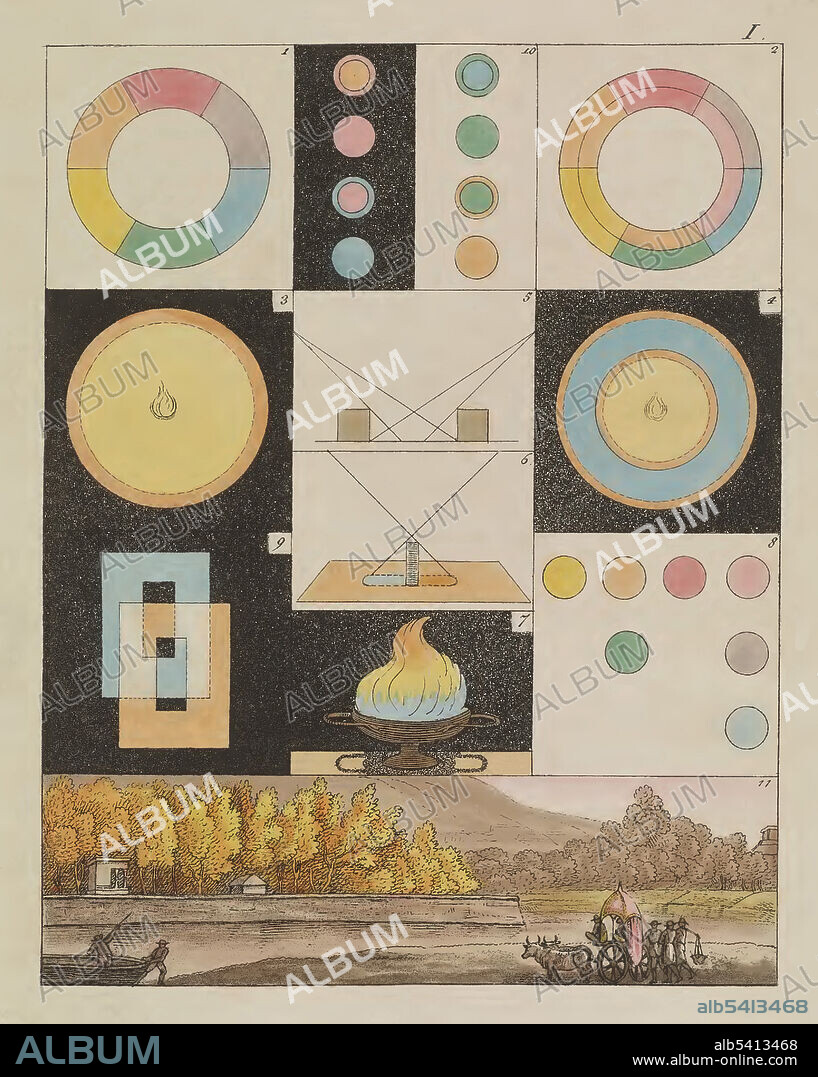alb5413468
Johann von Goethe, Theory of Colors,1810

|
Add to another lightbox |
|
Add to another lightbox |



Buy this image.
Select the use:

Title:
Johann von Goethe, Theory of Colors,1810
Caption:
Theory of Colours (Zur Farbenlehre) is a book by Johann Wolfgang von Goethe published in German (1810) and English (1840). The book contains detailed descriptions of phenomena such as colored shadows, refraction, and chromatic aberration. The work originated in Goethe's occupation with painting and mainly exerted an influence on the arts. His book provides a catalogue of how color is perceived in a wide variety of circumstances, and considers Isaac Newton's observations to be special cases. Unlike Newton, Goethe's concern was not so much with the analytic treatment of color, as with the qualities of how phenomena are perceived. Philosophers have come to understand the distinction between the optical spectrum, as observed by Newton, and the phenomenon of human color perception as presented by Goethe. Johann Wolfgang von Goethe (August 28, 1749 - March 22, 1832) was a German writer, pictorial artist, biologist, statesman, theoretical physicist, and polymath. He is considered the supreme genius of modern German literature. His works span the fields of poetry, drama, prose, philosophy, and science. J.G. Cotta'schen Buchhandlung, 1810 edition.
Credit:
Album / Science Source / Smithsonian Libraries
Releases:
Model: No - Property: No
Rights questions?
Rights questions?
Image size:
3357 x 4200 px | 40.3 MB
Print size:
28.4 x 35.6 cm | 11.2 x 14.0 in (300 dpi)
Keywords:
1810 • 19TH CENTURY • CELEBRITIES • CELEBRITY • CHART • COLOR • DIAGRAM • FAMOUS PEOPLE • FAMOUS • GERMAN • GERMANS • HISTORY • HTTP: / ARCHIVE. ORG / DETAILS / ZURFARBENLEHRE00GOETA • HUMAN COLOR PERCEPTION • JOHANN VON GOETHE • OPTICS • PERCEPTION • PHEMOMENA • SCIENCE • THEORY OF COLORS • ZUR FARBENLEHRE
 Pinterest
Pinterest Twitter
Twitter Facebook
Facebook Copy link
Copy link Email
Email
